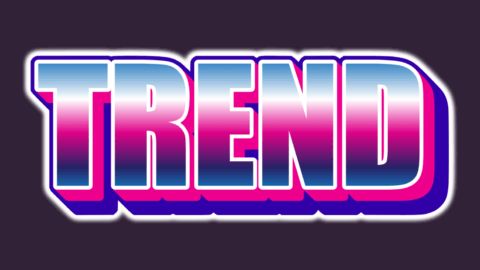Menu

Design trends move fast, but great vectors keep your brand consistent across web, social, and print. Seekvector makes it easy to stay current with a growing library of free PNG and SVG assets in the styles creatives love right now. From flat UI icons to lush 3D gradients and nostalgic retro sets, these vectors are ready to customize in minutes. In this guide, we’ll break down the trending vector styles on Seekvector, where they work best, and how to edit and optimize them for performance and SEO. You’ll also find quick tips, alt-text ideas, and internal/external resources to help you design faster and smarter.
Flat icons remain a UX staple because they’re clean, versatile, and fast to load. On Seekvector, you’ll find outline and filled icon packs built for navigation, dashboards, pricing tables, and mobile apps.
Why it’s trending:
Scales perfectly as SVG (crisp on retina).
Easy to recolor for brand consistency.
Works across light/dark modes.
Where to use: Header nav, feature lists, infographics, onboarding screens.
Editing tip: Normalize stroke weights and corner radii for a consistent set.
(Alt text example: “Seekvector minimal UI icons for website navigation menu”)
Soft gradients, glassy highlights, and isometric objects deliver a modern, premium look for tech, SaaS, and finance brands. Seekvector’s 3D/iso sets help you build hero sections and product visuals without heavy 3D renders.
Why it’s trending: Depth and polish without complexity.
Where to use: Homepage hero, explainer slides, product feature callouts.
Pro move: Export large scenes as WebP for lighter file sizes, and inline small accents as SVG. For inspiration on broader visual direction, skim Adobe’s design trend guides.
(Alt text example: “Seekvector 3D gradient isometric illustration for SaaS hero banner”)
Fluid blobs, gradient meshes, and wavy lines are perfect for backgrounds that feel lively but unobtrusive. They frame content, guide the eye, and reinforce brand color palettes.
Why it’s trending: Abstract forms pair well with minimalist layouts.
Where to use: Section dividers, landing page headers, podcast covers, social cards.
Editing tip: Apply your exact HEX values and reduce opacity for subtle layering.
(Alt text example: “Seekvector abstract gradient blob background for landing page header”)
Line-art and duotone sets bring a friendly, editorial tone that’s great for blogs, education, and onboarding. Because they’re lightweight vectors, pages stay fast.
Why it’s trending: Legible at small sizes, easy to brand, timeless style.
Where to use: Article headers, step-by-step guides, empty-state illustrations.
Editing tip: Keep stroke weight consistent (e.g., 1.5–2px) and stick to two brand colors for duotone. If you need quick sizing references for platforms, Canva’s size guide is a handy bookmark.
(Alt text example: “Seekvector duotone line illustration for how-to blog header”)
Nostalgia sells. Bold shapes, playful patterns, chrome type, and neon gradients are driving engagement across fashion, music, and creator brands. Seekvector’s retro packs let you test the look without a full rebrand.
Why it’s trending: Scroll-stopping color and personality.
Where to use: Limited-time campaigns, event promos, reels/carousels, merch mockups.
Editing tip: Balance loud color with clean typography to keep readability high.
(Alt text example: “Seekvector Y2K retro vector background for promo banner”)
Choose the right format:
SVG: icons, line-art, flat shapes; tiny file sizes, infinite scale.
PNG/WebP: complex gradients/3D for hero images and social posts.
Workflow (fast and clean):
Open SVG in Figma, Inkscape, or Illustrator.
Recolor to brand palette; verify contrast for accessibility.
Adjust spacing and alignment; remove unused layers.
Export: SVG for UI; WebP/PNG for images (multiple widths via srcset).
Compress before upload (TinyPNG, SVGOMG) and lazy-load below the fold.
SEO touches:
Descriptive file names: seekvector-3d-gradient-hero.webp
Alt text that describes the purpose + keyword naturally.
Homepage refresh: Swap a static header for an abstract mesh + CTA.
Feature grid: Pair flat icons with short headlines for scanning.
Social carousel: Combine retro backgrounds with bold product stats.
Blog series: Use duotone line-art for consistent category thumbnails.
Pitch decks: Add isometric scenes to visualize product flows.
Want more examples? Browse fresh uploads on Seekvector and bookmark your favorites to build a reusable brand kit. For comparisons and alternatives as you research, you can also explore Freepik’s vectors for a market perspective.
Trends come and go, but smart use of vectors keeps your brand flexible and fast. With Seekvector’s trending styles—from flat icons and line-art to 3D gradients, organic meshes, and retro sets—you can ship polished visuals in minutes. Explore the latest collections on Seekvector and start mixing styles that fit your voice and audience. Learn more about business opportunities in Seekvector on our website!